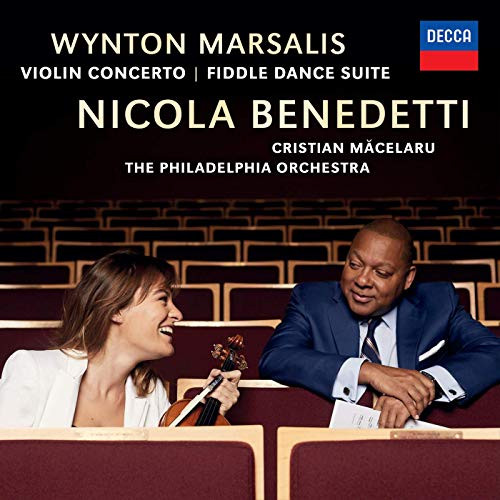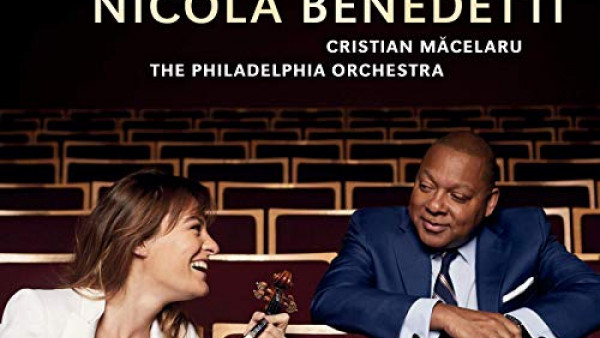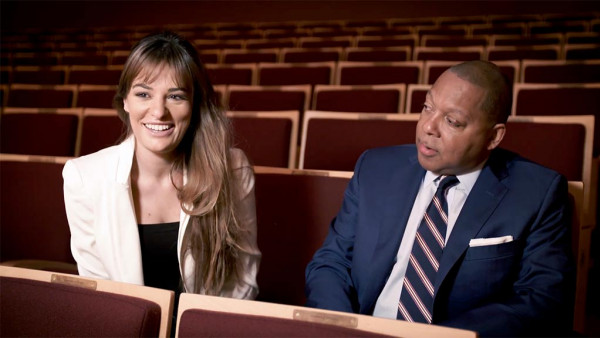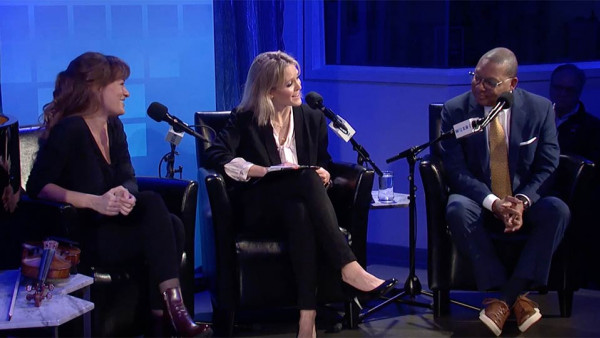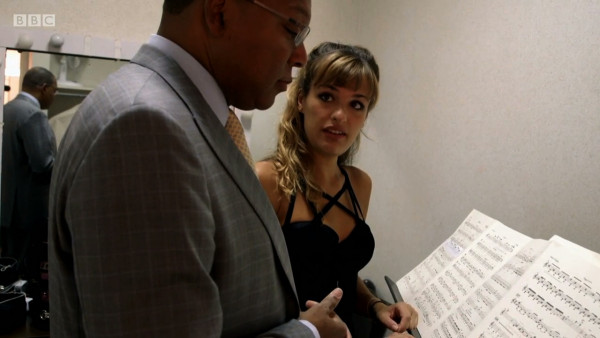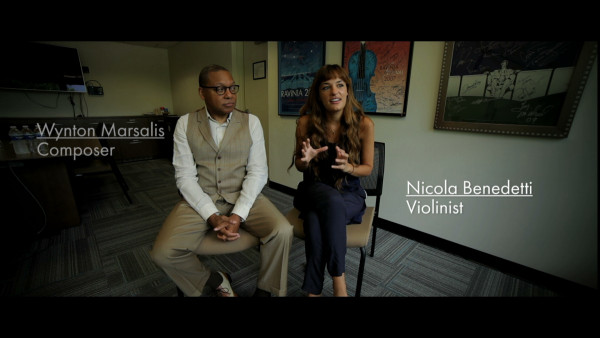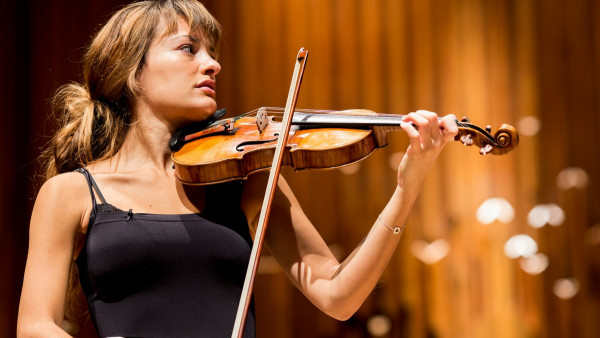Benedetti, LSO, Gaffigan, Barbican
A full house for a premiere performance: Wynton Marsalis bucks the trend in contemporary music. He’s an established name, more for his jazz than his classical work. But in recent years he has produced a substantial body of orchestral music, so the flocking crowds know what to expect. His new Violin Concerto continues the trend. Popular American idioms – mainly jazz and blues – are integrated into a classically oriented orchestral style with an impressive craftsmanship that hides all the joins. Despite the generally conservative style, it is an ambitious work, its sheer length tending towards outright indulgence. But it received the most committed and consummate premiere performance this evening from Nicola Benedetti and the London Symphony Orchestra. Whatever its faults, it is hard to imagine the work ever sounding better than this.
The concerto is in four movements, beginning with a peaceful nocturne and gradually building through an animato second movement and a Deep South congregational third to a foot-stomping hoedown finale. Marsalis and Benedetti tell us they collaborated every step of the way, and the violin writing is carefully judged to exploit the best of her playing. The lyrical opening movement needs long, sustained phrases, which Benedetti amply provides. The orchestral textures are often bare (Marsalis gives us proficient orchestration, but it’s rarely imaginative), and so the music relies on the sheer tonal character of the violin, and again Benedetti is always able to maintain the interest. She also excels in the more gutsy rhythmic writing. Many of the episodes in the fourth movement hoedown begin in the violin – earthy folk fiddle licks – before being taken up by the orchestra. Each time, Benedetti’s solo entry proved as gutsy and dynamic as the full orchestra that followed.
No doubt the concerto will receive many more performances, but it doesn’t have the feeling of an instant classic. The generally conservative style will probably play better in the States than in Europe, but there is no denying that he writes for an orchestra far larger than the ideas he gives them. And, attractive as many of the episodes are, the work is long and wayward. Indulgences are many, but the most egregious is the second movement cadenza, which never seems to end. Judicious cuts might make it a more attractive proposition, for soloists and audiences alike.
Conductor James Gaffigan (pictured above by Mat Hennek) and the London Symphony Orchestra devised an excellent all-American programme to frame the concerto, with masterpieces from Stravinsky and Bernstein that were in the spirit of the Marsalis, but without ever competing with it. The second half opened with Stravinsky’s Symphony in Three Movements, perhaps the most American of his orchestral works. It is a tough work to bring off, but Gaffigan’s clear, unfussy technique and carefully controlled dynamics and tempos produced serviceable results. Unfortunately for him, superlative competition is at hand, namely the recording of the LSO’s previous performance, under Gergiev, released on the orchestra’s own label. Against this, Gaffigan’s account lacks rhythmic clarity, and his textures feel weighed down, lacking the fleetness of touch that Gergiev brings to the score.
No such complaints though with Bernstein’s Chichester Psalms, which closed the concert. Gaffigan was in his element here, as was the LSO Chorus, who filled the hall with their bright, warm tone. Excellent balance was maintained between the orchestra and the chorus, even in the loudest climaxes. Good solos from boy treble Ben Hill and the soloists within the choir. All round, this was a bright and joyous climax to the evening.
But it wasn’t the highlight. That came early on with the Bernstein Prelude, Fugue and Riffs, which opened the concert. For this, the LSO regrouped as a big band, with four woodwind players taking up sax, the trumpets and trombones standing behind, a drum kit and string bass at the front, and stage right a piano and clarinet soloist Chris Richards. Again, Gaffigan was in his element, cleanly articulating the cross rhythms and offbeats to a keenly engaged and stylistically alert ensemble. The real stars here, and arguably throughout the evening, were the trumpets and trombones, putting out clean, sharp attacks, with ideal balance within the section and a real feeling for each of the jazz styles. Few orchestras in the world field a brass section that can cook like this.
by Gavin Dixon
Source: The Arts Desk

